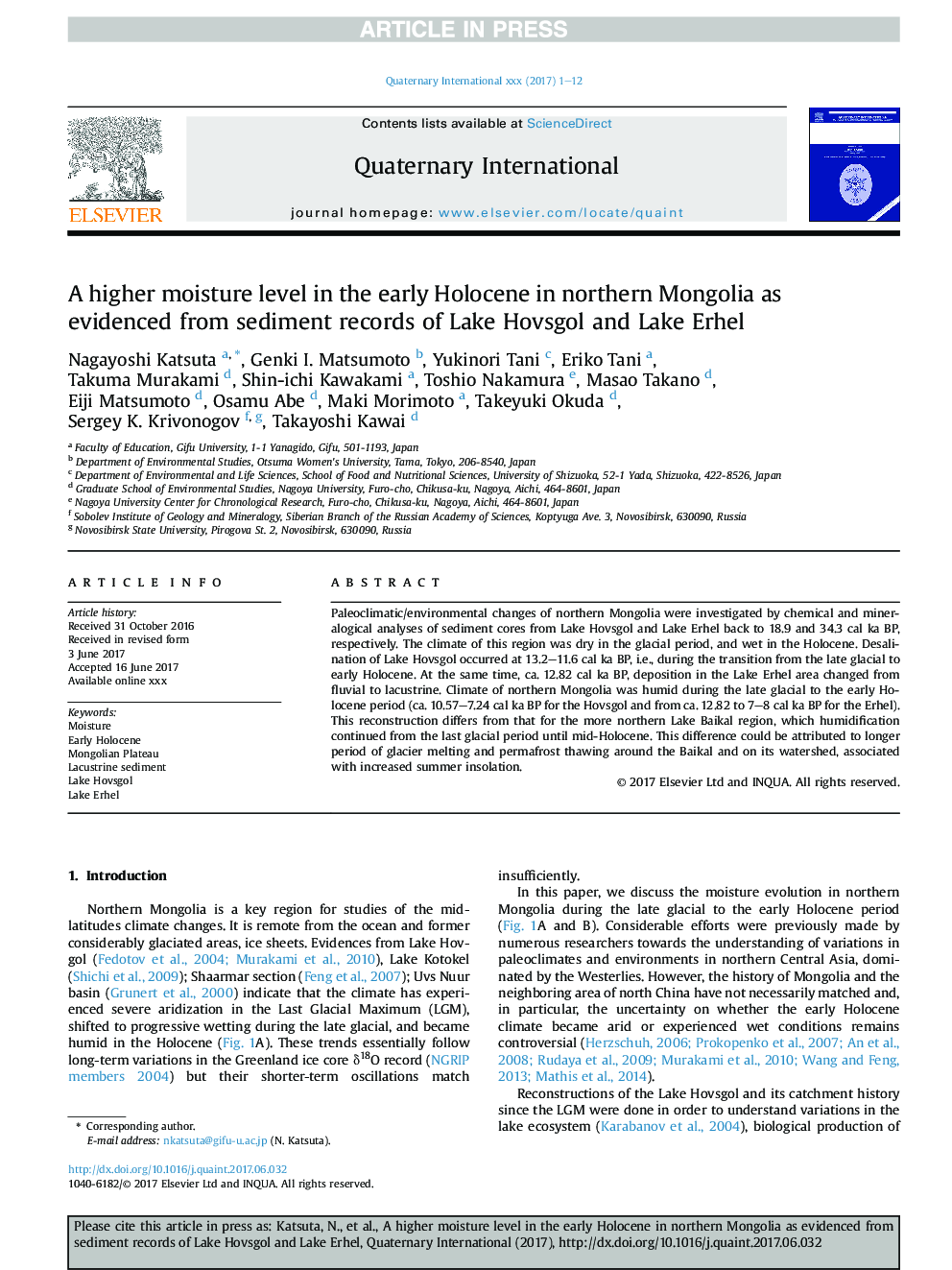| Article ID | Journal | Published Year | Pages | File Type |
|---|---|---|---|---|
| 5112967 | Quaternary International | 2017 | 12 Pages |
Abstract
Paleoclimatic/environmental changes of northern Mongolia were investigated by chemical and mineralogical analyses of sediment cores from Lake Hovsgol and Lake Erhel back to 18.9 and 34.3Â cal ka BP, respectively. The climate of this region was dry in the glacial period, and wet in the Holocene. Desalination of Lake Hovsgol occurred at 13.2-11.6Â cal ka BP, i.e., during the transition from the late glacial to early Holocene. At the same time, ca. 12.82Â cal ka BP, deposition in the Lake Erhel area changed from fluvial to lacustrine. Climate of northern Mongolia was humid during the late glacial to the early Holocene period (ca. 10.57-7.24Â cal ka BP for the Hovsgol and from ca. 12.82 to 7-8Â cal ka BP for the Erhel). This reconstruction differs from that for the more northern Lake Baikal region, which humidification continued from the last glacial period until mid-Holocene. This difference could be attributed to longer period of glacier melting and permafrost thawing around the Baikal and on its watershed, associated with increased summer insolation.
Related Topics
Physical Sciences and Engineering
Earth and Planetary Sciences
Geology
Authors
Nagayoshi Katsuta, Genki I. Matsumoto, Yukinori Tani, Eriko Tani, Takuma Murakami, Shin-ichi Kawakami, Toshio Nakamura, Masao Takano, Eiji Matsumoto, Osamu Abe, Maki Morimoto, Takeyuki Okuda, Sergey K. Krivonogov, Takayoshi Kawai,
